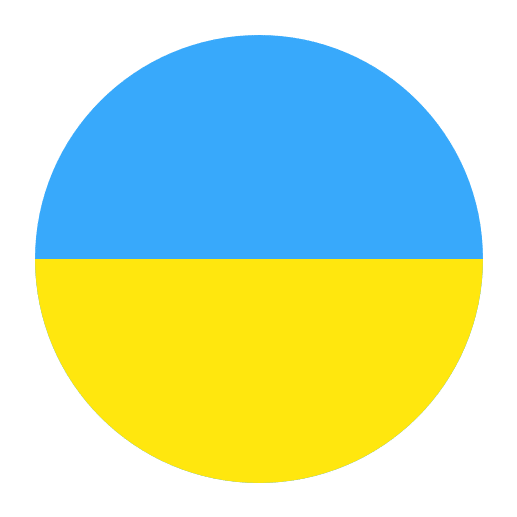Learning a new language can be an exciting journey, and if you’ve chosen to learn Ukrainian, you’re in for a rewarding experience. Ukrainian is a beautiful language with a rich cultural heritage and a significant number of speakers, particularly in Ukraine. However, like any language, mastering Ukrainian requires dedication, strategy, and a well-thought-out learning plan tailored to your personal needs and goals. In this article, we will guide you through the steps to create a personalized Ukrainian language learning plan that suits your lifestyle and learning preferences.
Understanding Your Motivation
Before you dive into creating your learning plan, it’s crucial to understand why you want to learn Ukrainian. Are you planning to travel to Ukraine? Do you have Ukrainian heritage? Are you interested in Ukrainian culture, literature, or history? Your motivation will shape your learning plan and keep you focused during challenging times.
Setting Clear Goals
Once you’ve identified your motivation, set clear and achievable goals. Goals can range from learning basic conversational phrases to becoming fluent in the language. Here are some examples of goals you might set:
– **Short-term goals**: Learn the Ukrainian alphabet, master basic greetings, or complete a beginner’s course.
– **Medium-term goals**: Hold a simple conversation, understand basic grammar, or read children’s books in Ukrainian.
– **Long-term goals**: Achieve fluency, read Ukrainian literature, or pass a language proficiency test.
Assessing Your Current Level
Whether you’re an absolute beginner or have some prior knowledge, it’s essential to assess your current level of Ukrainian. This assessment will help you tailor your learning plan to your specific needs. You can take online placement tests or use self-assessment tools to determine your proficiency level.
Identifying Your Learning Style
Everyone has a unique learning style, and understanding yours will make your language learning journey more effective and enjoyable. Here are some common learning styles:
– **Visual learners**: Learn best through images, videos, and written materials.
– **Auditory learners**: Learn best through listening and speaking.
– **Kinesthetic learners**: Learn best through hands-on activities and movement.
– **Reading/Writing learners**: Learn best through reading texts and taking notes.
Identify your primary learning style and incorporate activities that align with it into your learning plan.
Choosing the Right Resources
The availability of resources can significantly impact your learning progress. Here are some recommended resources for learning Ukrainian:
Textbooks and Workbooks
Textbooks and workbooks provide structured lessons and exercises to help you build a solid foundation in Ukrainian. Some popular options include:
– “Beginner’s Ukrainian” by Yuri Shevchuk
– “Colloquial Ukrainian” by Ian Press and Stefan Pugh
– “Ukrainian: A Comprehensive Grammar” by Ian Press and Stefan Pugh
Online Courses and Apps
Online courses and language learning apps offer flexibility and interactive learning experiences. Some popular platforms include:
– Duolingo: A gamified language learning app with a Ukrainian course.
– Memrise: Offers vocabulary and phrase practice with spaced repetition.
– Babbel: Provides structured lessons and practice exercises.
– Pimsleur: Focuses on audio-based learning for improving speaking and listening skills.
Language Exchange and Tutoring
Interacting with native speakers is crucial for developing your speaking and listening skills. Consider these options:
– **Language exchange**: Find a language exchange partner through websites like Tandem or HelloTalk. You can practice Ukrainian while helping your partner with English.
– **Tutoring**: Hire a tutor for personalized lessons. Websites like iTalki and Preply connect you with Ukrainian tutors for one-on-one sessions.
Multimedia Resources
Incorporate multimedia resources to make your learning experience more engaging:
– **Podcasts**: Listen to Ukrainian podcasts like “Ukrainian Lessons Podcast” or “Learn Ukrainian Podcast.”
– **YouTube Channels**: Follow channels like “Ukrainian Lessons” and “Easy Ukrainian” for video lessons and cultural insights.
– **Music and Movies**: Listen to Ukrainian music and watch Ukrainian films with subtitles to improve your listening skills and cultural understanding.
Creating a Study Schedule
Consistency is key to language learning. Create a study schedule that fits your lifestyle and stick to it. Here are some tips for effective scheduling:
Daily Practice
Incorporate language learning into your daily routine, even if it’s just for a few minutes. Consistent daily practice is more effective than sporadic, longer sessions.
Balanced Activities
Ensure your study schedule includes a balance of activities that cover all language skills: reading, writing, listening, and speaking. For example:
– **Monday**: Vocabulary practice and listening to a podcast.
– **Tuesday**: Grammar exercises and watching a YouTube lesson.
– **Wednesday**: Speaking practice with a language exchange partner.
– **Thursday**: Reading a short text and writing a summary.
– **Friday**: Reviewing vocabulary and listening to Ukrainian music.
Setting Aside Time for Review
Regularly review what you’ve learned to reinforce your knowledge. Use spaced repetition techniques to review vocabulary and grammar concepts at increasing intervals.
Immersing Yourself in the Language
Immersion is one of the most effective ways to learn a language. Surround yourself with Ukrainian as much as possible:
Changing Your Environment
Make small changes to your environment to increase your exposure to Ukrainian:
– Change the language settings on your phone and social media to Ukrainian.
– Label household items with their Ukrainian names.
– Listen to Ukrainian radio stations or watch Ukrainian TV shows.
Engaging with the Ukrainian Community
Connect with the Ukrainian-speaking community to practice your language skills and learn about the culture:
– Join Ukrainian cultural groups or clubs in your area.
– Attend Ukrainian cultural events, such as festivals, concerts, and workshops.
– Participate in online forums and social media groups related to Ukrainian language and culture.
Tracking Your Progress
Monitoring your progress is essential for staying motivated and making adjustments to your learning plan as needed. Here are some strategies for tracking your progress:
Keeping a Language Journal
Maintain a language journal to record your daily activities, new vocabulary, and any challenges you encounter. Reflect on your progress regularly and set new goals as you achieve existing ones.
Using Language Learning Apps
Many language learning apps offer progress tracking features. Use these tools to monitor your improvement in vocabulary, grammar, and overall proficiency.
Taking Regular Assessments
Periodically assess your language skills through quizzes, tests, and speaking evaluations. These assessments will help you identify areas that need improvement and adjust your learning plan accordingly.
Staying Motivated
Maintaining motivation is crucial for long-term language learning success. Here are some tips to stay motivated:
Celebrating Small Wins
Acknowledge and celebrate your achievements, no matter how small. Completing a lesson, mastering a difficult grammar concept, or having a successful conversation in Ukrainian are all milestones worth celebrating.
Joining a Supportive Community
Surround yourself with fellow language learners who can offer support, encouragement, and accountability. Join online forums, social media groups, or local language meetups to connect with others on the same journey.
Reminding Yourself of Your Motivation
Regularly remind yourself of why you started learning Ukrainian. Revisit your initial motivation and goals to keep your passion alive.
Adapting Your Plan as Needed
Language learning is a dynamic process, and your learning plan should be flexible enough to accommodate changes. If you find certain methods or resources aren’t working for you, don’t be afraid to try something new. Continuously assess your progress and adjust your plan to ensure it remains effective and enjoyable.
Seeking Feedback
Regularly seek feedback from tutors, language exchange partners, or fellow learners. Constructive feedback can help you identify areas for improvement and guide you in refining your learning strategies.
Reflecting on Your Learning Journey
Take time to reflect on your language learning journey. Consider what has worked well, what challenges you’ve faced, and how you’ve overcome them. Use these reflections to make informed decisions about how to proceed with your learning plan.
Conclusion
Creating a personalized Ukrainian language learning plan involves understanding your motivation, setting clear goals, assessing your current level, identifying your learning style, choosing the right resources, and creating a consistent study schedule. Immersing yourself in the language, tracking your progress, staying motivated, and adapting your plan as needed are all crucial components of a successful language learning journey.
Remember, learning a language is a marathon, not a sprint. Stay patient, persistent, and positive, and you’ll gradually see progress. With dedication and the right plan, you’ll be well on your way to mastering the beautiful Ukrainian language.

